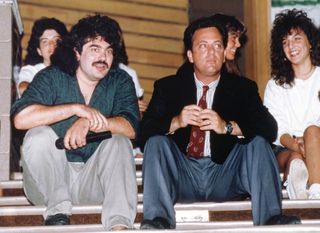We have all heard the expression “going the extra yard,” and we all know what it means, right? Using a quick online search to see what is out there, I found it defined as going beyond what is “necessary or expected in order to please someone, achieve something, or get something done correctly.”
I’m good with that. Now, what does that mean to us as service providers and to our industry in general?
[Beyond the Tech: Is Leadership Taught or Learned?]
What prompted me to write this piece is an actual issue that came up during a conversation I had with Shane Seira, executive director of systems engineering at SPYE, a premier AV integrator in Minneapolis. I had been the architect of new drawing standards for the company. We were talking about infrastructure construction documents I had created and provided in recent months. As I had not had much feedback, I asked how satisfied SPYE was with the quality of work overall, and if there was anything I could do differently.
Shane said the work is top quality, and they are more than satisfied, but…
He told me not to take offense (none taken), but he wanted to add additional details to our drawings. Even though I called out device details and dimensions in more than one place—say an elevation, device detail, and a reflected ceiling plan (RCP)—that was not enough.
It’s about peeling back the layers, thinking in advance about an issue, and solving it before it happens.
There had been an instance at an out-of-state job site. When they got on site, devices clearly shown on the drawing in more than one place were missing, causing significant delays and cost overage. He was very clear that it wasn’t me or my drawing(s). The GC, EC, and crews on site admitted to not reading the notes!
Ouch, that is not supposed to happen.
Shane mentioned he would like me to add additional details showing, for example, a side elevation showing a table, floor pocket, wall boxes, and the interconnecting conduit between all devices, in addition to all the drawings I just described. In other words, he wanted a graphic representation of what was clearly described in three locations already.
He believes, and I don’t disagree, having both text and redundant drawings from multiple views will likely work better for those who choose not to read the notes—and, in fact, will make it less likely to be missing devices. Of course, that means more work initially, and more redundant work at that, but that’s what it means to go the extra yard. It’s about peeling back the layers, thinking in advance about an issue, and solving it before it happens. (I daresay that is what an engineer is supposed to do.)
[On Your Business: Choosing Not to Work with a Client]
In today’s world, getting to work early, staying late, and occasional weekend work is almost universally accepted as necessary. But I think SPYE’s idea is really forward thinking and the correct perspective to have. Putting in the extra time, money, and effort to upgrade all drawings is nothing less than a stellar way to run a department and company. There is a difference between adjusting your workflow for out-of-state projects and doing it across the board. It’s just a smart policy to add this same level of detail on local and remote projects to your construction documents.
Perspective folks, what is yours? Are you always looking for ways to cut corners, maybe save a dollar on the front end to add $10 on the back end? The perspective to constantly be agile and look toward doing the best work you can, even if you make a little less, is what separates the companies from really going the extra yard from those who maybe just give an inch.
Keeping the Faith
Here is a related experience I had in the 80s. I provided AV services for a small show on Long Island in the Hamptons at Southampton College (which sadly closed in 2004). There were maybe 200 in attendance in the auditorium for a private Q&A with Billy Joel. I brought in a wireless mic, connected to their headend system, and served as the MC. I walked around, providing the mic so everyone could hear the questions that were asked. Billy sat at a piano for much of the time.

The usual questions were asked—do you write the music or lyrics first and such things—but one question really stood out to me: How does it feel to be a genius?
Billy’s answer was interesting to say the least. He thought for a moment, and said (the best of my recollection), “I am no genius. I am competent at what I do, that is all, but in this world being competent at something can appear to make you a genius compared to others.”
Almost 40 years ago, still relevant? You decide.


